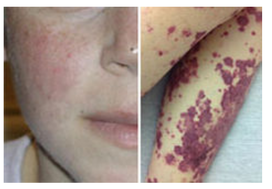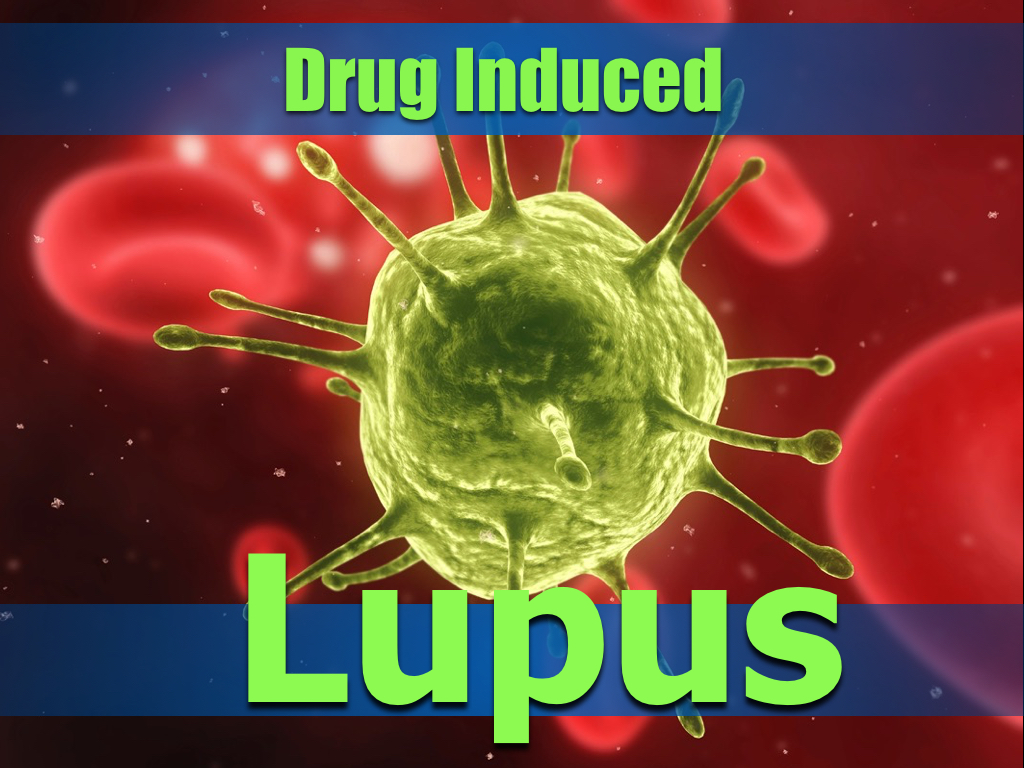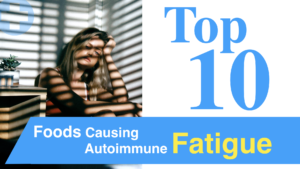Lupus. A chronic autoimmune disease that can affect almost any organ system.(1) It’s effects on the body are vast and terrible. According to the best current estimate, 16,000 new lupus cases are diagnosed per year and this figure will likely increase. More than 90% of cases of lupus cases occur in women, consistently starting at childbearing age. It’s a devastating and life-changing disease that doctors say currently has no cure.(2)


Here’s a list of the terrible effects lupus has on the body:
- fatigue
- fever
- joint pain
- weight changes
- hair loss
- disfiguring rashes
- photosensitivity
- renal failure
- acute nephritic disease (inflammation of the kidneys)
- seizure
- psychosis (losing touch with reality)
- nausea
- dyspepsia (indigestion)
- abdominal pain
- pulmonary hypertension
- interstitial lung disease
- anemia (3)
Health professionals say that if a woman of childbearing age is experiencing the combined symptoms of fever, joint pain and rash she should immediately contact her physician to investigate the likely possibility of systematic lupus.(1)
How does one get lupus? More importantly how does one avoid lupus? There are many possible answers to this question. However over the last decade medical studies have been making some shocking finds about a contributing factor to lupus that many would not expect. For some, this factor can be the definite sole source of their lupus, and for others it can be a factor aggravating their already existing condition making it much worse. The medical community understands well that a very common contributing factor to autoimmune diseases are toxins. But they found that a particular group of chemicals seem to be at the head. I’ll allow the author of the chemical research paper entitled “Toxicology of Autoimmune Diseases” let the cat out of the bag.
“The chemicals most often associated with development of autoimmunity in humans are medications.”(4)
“A large list of drugs have been shown to induce lupus-like disease and this list
continues to grow as new therapeutics are introduced.” (ibid)
That’s right, meds. Toxic chemicals are one of the leading causes in autoimmunity and the chemicals that are the “most often associated” with individuals developing autoimmune diseases are prescription medications. My wife and I often meet people who are quite content with living on their medications. “It seems to be doing the job and gets me by so why make pains to get off of them” people say. The fact is that your medications may be a lot more of a job than you signed up for by contributing to a completely different problem of which you’re unaware.
In fact the drug factor in lupus is so strong that there has been a separate category of lupus created called drug-induced lupus erythematosus (DILE). The other form of lupus which is much more common is called systemic lupus erythematosus (SLE). It has been estimated that up to 10% of SLE cases are drug-induced.(5) Systemic lupus (SLE) is an autoimmune disease that occurs in a number of organ systems within the body, hence the term “systemic.” Drugs can either aggravate pre-existing systemic lupus or even initiate disease in otherwise previously healthy individuals causing drug-induced lupus. The studies cite that for those with drug-induced lupus, when they discontinue the aggravating drugs their symptoms stop as well.(4) What this is saying is that some lupus sufferers will get 100% better from their autoimmunity just by removing the culprit medications!
Free Offer
I was able to reverse my autoimmune condition without the use of any medications. My wife and I wrote an eBook entitled, How I Reversed My Autoimmune Disease, to learn more about it click here.
How do I know which lupus I have?
Hopefully you don’t have lupus. But if you do here’s a list of clinical findings that help categorize the difference between systemic lupus and drug-induced lupus.Systemic Lupus (SLE)
- Average age of onset is 20-30 years old
- Affects blacks more than whites
- Female-to-male ratio of 9:1
- More than 90% of cases of SLE occur in women, frequently starting at childbearing age
- SLE due to drugs may occur within hours to days
Drug-induced lupus (DLIE)
- Average age of onset is 50-70 years old
- Affects whites more than blacks
- Female-to-male ratio of 1:1
- Takes months or years before the symptoms occur(3)

There is also a variant of drug-induced lupus called, drug-induced subacute cutaneous lupus erythematosus (DISCLE) which predominantly effects the skin. The clinical findings of (DISCLE) are as follows:
- Most cases are resolved within weeks of drug withdrawal
- White women make up the large majority of cases
- Average age of sufferers is 58
- Antihypertensives and antifungals were most frequently the culprits (3)
Which drugs initiate drug-induced lupus (DLIE)?
Studies have helped identify a list of several key drugs that have been shown to contribute to autoimmunity, and most recently it was found that the drugs procainamide and hydralazine have the highest risk for inducing more severe forms of autoimmunity. Here is a list of the most common drugs which act as toxic agents causing drug-induced lupus.
- Procainamide
- Hydrazine
- Chlorpromazine
- Quinidine
- Isoniazid
- Diltiazem
- Minocycline
For procainamide and hydralazine, the mechanism driving an autoimmune response appears to be in their ability to inhibit DNA methylation. Therefore these drugs cause a chain reaction that alters the genes contributing to autoimmunity. To me, having my DNA modified by toxic drugs doesn’t sound good. In addition, procainamide has been shown to wreak havoc on central immune tolerance.(4)
More Chemicals
Animal studies also show strong evidence that several very common chemicals in our society contribute to autoimmunity. For instance silica, an oxide of silicon, is associated with the development of systemic lupus and scleroderma (a hardening of the body’s tissue). Furthermore, several disease studies have found a connection with exposure to asbestos and development of autoimmune diseases. Mercury produced autoimmunity in mice studies, and human exposure to mercury has been implicated as an environmental trigger in the development of autoimmunity. (ibid)
There is one chemical in particular we need to especially be aware of. It’s called (take a breath…) Tetramethylpentadecane or TMPD, also commonly known as pristane. It is associated with causing abnormalities in the human immune system. TMPD also induces systemic autoimmunity in otherwise healthy mice and has produced similar responses in the mice as happens in the bodies of lupus patients. TMPD treated-mice developed arthritis, and it has also been found to cause a chronic inflammatory response in the liver, spleen and lymph nodes. Thankfully, what scientist are learning about TMPD -induced lupus might have broader implications for other autoimmune disorders including rheumatoid arthritis, Sjögren's syndrome and chronic hepatitis C-induced autoimmunity. (ibid)(6)
The reason I’d like to focus on TMPD is because where it is commonly found. The medical studies reveal that it's found in some very concerning places.
“(TMPD) is a common constituent of mineral oil… and is found in a number of processed foods made for human consumption.”(4)
Yikes! We could be eating this stuff!
Staying off as many medications as possible, reading labels, eating a clean diet free of as many processed foods as possible and doing regular cleanses goes a long way. The fact is that we live in a toxic world that God never intended for us to be in and we have to be informed and take precautions. The Bible says, “A prudent man foreseeth the evil, and hideth himself: but the simple pass on, and are punished” Proverbs 22:3. Though it’s advisable to seek advice from your physician before starting any new treatment or discontinuing an existing treatment, being informed as to the facts regarding the chemicals that surround us can be an invaluable help that leads to overcoming sickness and better health.
How do I Avoid the Toxins?
Find out what they are.
By Gabriel Arruda
Author of How I Reversed My Autoimmune Disease
(1) Systemic Lupus Erythematosus (SLE)
http://emedicine.medscape.com/article/332244-overview
Dalle Vedove C, Simon JC, Girolomoni G. Drug-induced lupus erythematosus with emphasis on skin manifestations and the role of anti-TNFα agents. Journal Der Deutschen Dermatologischen Gesellschaft. 2012;10(12):889-897. https://www.ncbi.nlm.nih.gov/pmc/articles/PMC3561694/
Reeves WH, Lee PY, Weinstein JS, Satoh M, Lu L. Induction of autoimmunity by pristane and other naturally-occurring hydrocarbons. Trends in immunology. 2009;30(9):455-464. https://www.ncbi.nlm.nih.gov/pubmed/19699150/



